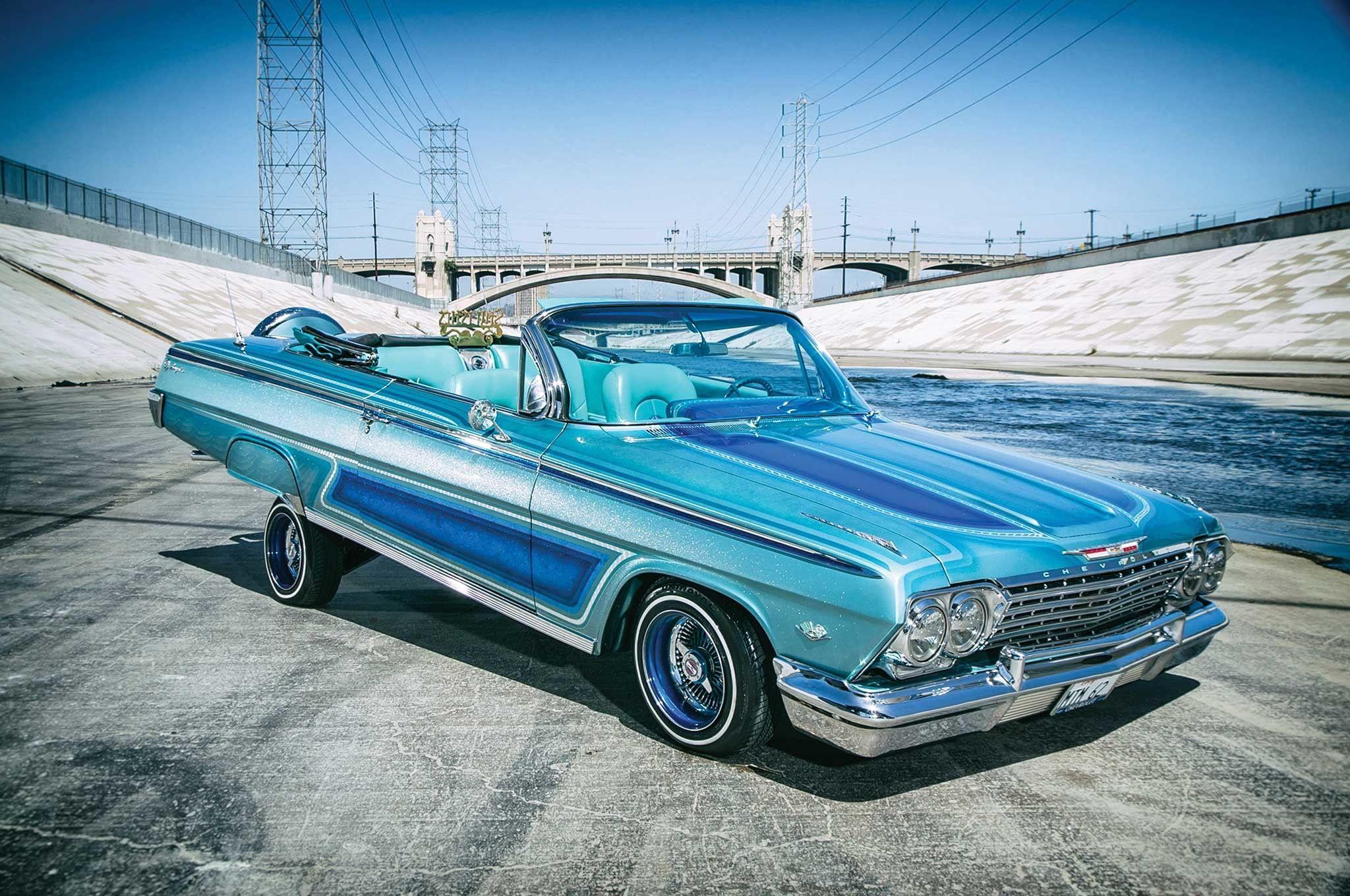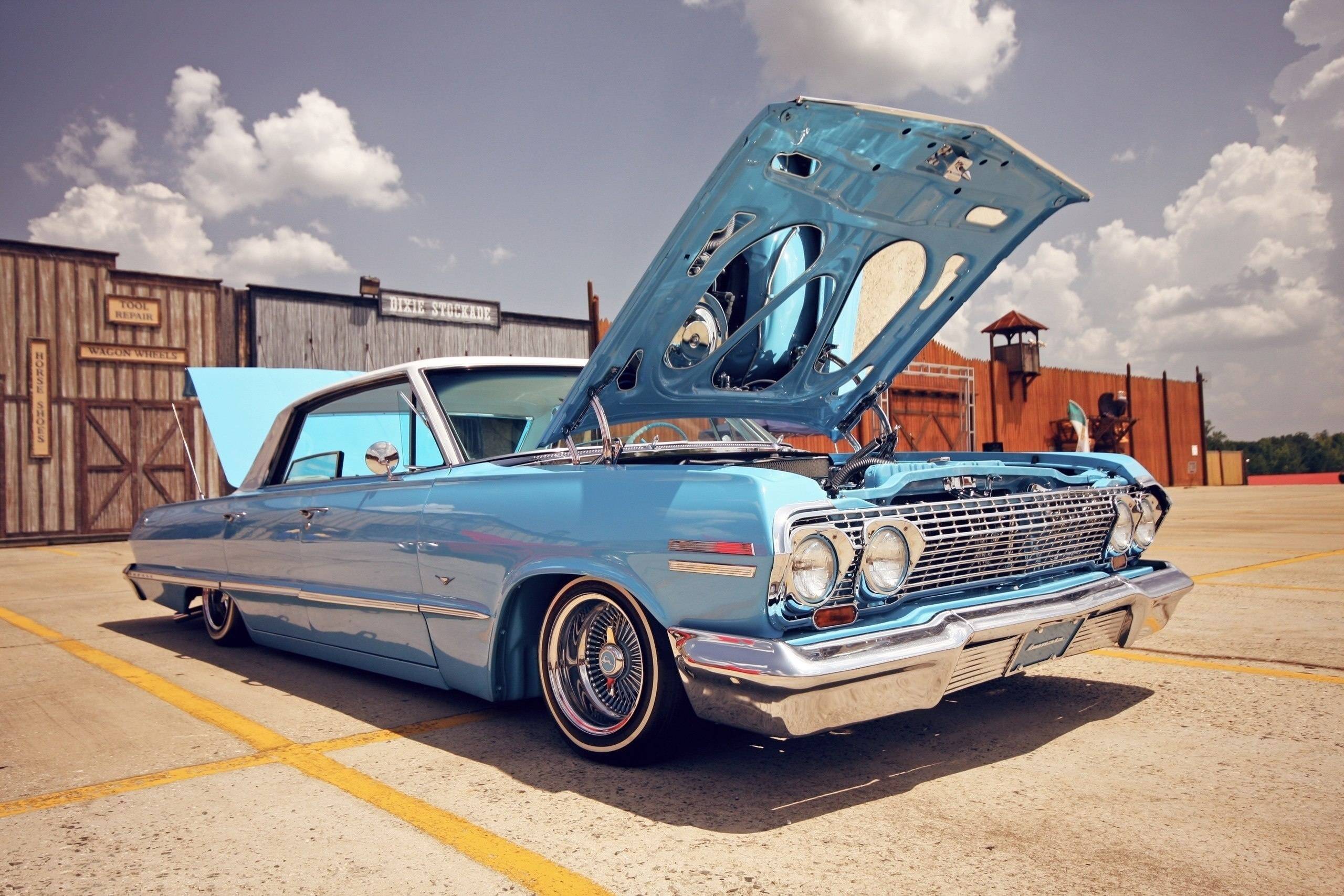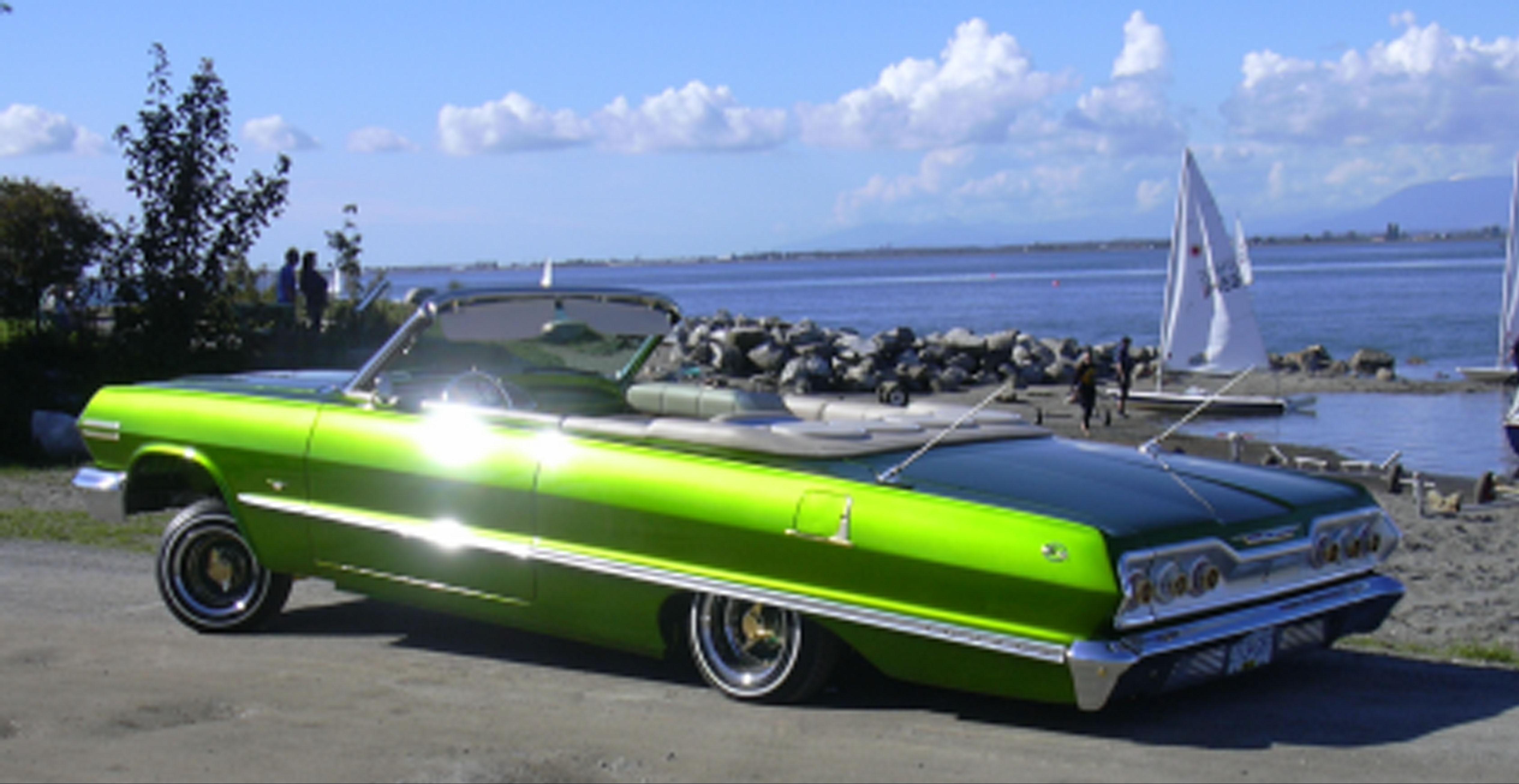Have you ever seen a ride that just stops you in your tracks, something so special it feels like a moving piece of art? That, in a way, is what a lowrider bike tricycle is all about. It's not just a way to get around; it's a statement, a nod to a rich history, and a truly fun way to express yourself. These three-wheeled wonders take the spirit of classic lowrider cars and shrink it down, creating something really unique that catches everyone's eye, very much like their larger, four-wheeled cousins.
The whole idea of a lowrider, you see, comes from a deep cultural place. It started with Mexican American youth back in the 1940s, who took ordinary cars and made them sit super low to the ground. These weren't just cars; they were, actually, transformed into cultural expressions, a kind of rolling canvas for the dedicated people who built and drove them. Over the years, this culture grew, even though for a long time, lowriders and their drivers were, sadly, seen as tied to drugs and gangs. It's taken many decades, but that old way of thinking is finally changing, and people are starting to appreciate the art and dedication involved, which is good.
So, when we talk about a lowrider bike tricycle, we're talking about bringing that same passion and style to a smaller scale. These aren't your typical bikes; they have that unmistakable low-slung look, often with lots of shiny chrome, intricate details, and a vibe that says "cruise slow and look good." They're a fantastic way for anyone, whether you're a long-time fan of lowrider culture or just discovering it, to get involved and enjoy a bit of that custom magic on the street, and that's pretty cool.
Table of Contents
- The Roots of a Rolling Art Form
- What Makes a Lowrider Bike Tricycle Special?
- The Heart of the Build: Customization
- Joining the Scene: Lowrider Bike Culture
- Building Your Own Lowrider Trike
- The Enduring Appeal of Lowrider Tricycles
- Frequently Asked Questions About Lowrider Bike Tricycles
The Roots of a Rolling Art Form
To truly get what a lowrider bike tricycle is all about, we have to look back at where the whole idea came from. The lowrider movement, you see, began in the 1940s among young Mexican American people. They took cars and changed them, making them lower to the ground, which was a very different thing from what most people were doing with cars back then. These vehicles became more than just transportation; they were a way to show off culture and personal style, a bit like a moving canvas, so.
Historically, many of the first lowrider enthusiasts were Latino men, often from places like Texas, and that's just a fact. They put in countless hours transforming their cars, modifying the suspension to really decrease the distance between the car and the ground. This often involved hydraulic systems that let the car "hop" or bounce up and down, which is really quite a sight to see. The term "lowrider" came to describe both these specially changed cars and the passionate people who made them and drove them, too.
For a long time, the lowrider scene faced some tough perceptions. Lowriders and their drivers were often unfairly linked to drugs and gangs, which was a very real challenge for the community. However, as Denise Sandoval, a professor of Chicana and Chicano Studies at California State University, Northridge, has pointed out, lowrider culture has truly endured. It's taken many decades, but that old, wrong perception is finally starting to fade away, allowing the art and dedication of the culture to shine through, and that's a good thing.
So, when we talk about a lowrider bike tricycle, we're essentially talking about taking that rich history and unique aesthetic and applying it to a bicycle with three wheels. It's a way to keep the spirit alive, to honor the origins, and to create something beautiful and custom that still embodies that "low and slow" attitude, which is pretty neat. These bikes are a direct connection to that proud past, offering a chance for new generations to experience a piece of this cultural expression, you know?
What Makes a Lowrider Bike Tricycle Special?
A lowrider bike tricycle isn't your average neighborhood cruiser; it's something entirely different, almost a piece of art you can ride. What makes these trikes stand out is their very distinct appearance and the way they feel when you ride them, which is quite unique. They borrow heavily from the design principles of lowrider cars, but they adapt them in a way that truly works for a bicycle, and that's clever.
The Distinctive Look
One of the first things you notice about a lowrider bike tricycle is its posture. These trikes sit incredibly low to the ground, much like their car counterparts. This low stance is achieved through special frame designs and often smaller wheels, which give them a really distinctive silhouette. You'll also see a lot of shine, with chrome plating on almost every metal part, from the handlebars to the wheel spokes, and that's just part of the look.
Beyond the chrome, there's often intricate detailing. Think about custom paint jobs with detailed pinstriping or murals, plush velvet seats, and sometimes even chain steering wheels, much like you'd find in a classic custom car. The wheels themselves are a big part of the appeal, often featuring many spokes, sometimes over a hundred, and classic whitewall tires that just scream vintage cool. It's all about making a visual impact, and they really do, so.
Riding Low and Slow
The saying "low and slow" is a core part of lowrider culture, and it applies perfectly to a lowrider bike tricycle. These aren't built for speed or racing; they're made for cruising, for showing off the craftsmanship, and for enjoying the ride at a relaxed pace. When you're on one, you're not rushing; you're enjoying the moment, letting people admire your ride, and being part of the scene, and that's pretty much the point.
The riding experience is quite different from a standard bicycle, too. The low center of gravity gives them a stable, grounded feel, which can be very comfortable for leisurely rides. It's about the journey and the visual presence you create, rather than getting from point A to point B quickly. This relaxed pace also allows for more interaction with the surroundings and with other people, which is a big part of the social side of the culture, you know?
The Heart of the Build: Customization
The true spirit of any lowrider, whether it's a car or a lowrider bike tricycle, lies in its ability to be customized. These aren't mass-produced items; they are, in fact, often hand-built or heavily modified by their owners, making each one a truly personal expression. This process of making it your own is a huge part of the fun and the appeal, and that's very much the case.
Frames and Forks
The frame is the backbone of any lowrider trike, and it's where the customization often begins. You'll find frames with long, stretched designs, sometimes with exaggerated curves or "gooseneck" styles that push the front wheel far out. These frames are usually made from sturdy steel, ready to take on lots of chrome or a vibrant custom paint job. The forks, which hold the front wheel, are also key; they can be incredibly long, sometimes even extending several feet in front of the rider, giving the trike a truly dramatic look, so.
Wheels and Tires
Wheels are a really important part of the lowrider aesthetic. For a lowrider bike tricycle, you'll typically see smaller wheels, often 16 or 20 inches, but what makes them special are the spokes. Instead of the usual 36 spokes, lowrider wheels can have 72, 144, or even more, creating a dense, shiny web that catches the light beautifully. These are often chrome-plated, of course, and paired with classic whitewall tires that complete the vintage feel, and that's a big part of the appeal.
Seating and Handlebars
Comfort and style meet in the seating and handlebar choices. Seats on lowrider trikes are often plush, upholstered in velvet or velour, sometimes with intricate button-tufting, making them look like miniature thrones. Handlebars can be incredibly tall, reaching up to the rider's shoulders or even higher, or they might be wide and swept back, giving the rider a laid-back, almost reclined posture. These choices aren't just for looks; they really shape the riding experience, too.
Hydraulics and Hopping (or not)
In lowrider cars, hydraulic suspension systems are a signature feature, allowing the cars to "hop" or bounce up and down, or even tilt side to side. While full hydraulic systems that allow a bike to "hop" are less common on lowrider bike tricycles due to their smaller scale and weight, the *spirit* of adjustable suspension is still there. Some custom builders might incorporate air ride systems or special spring setups to achieve that super-low stance and a bit of bounce, or just to make the ride smoother. It's a way to pay homage to the car culture's hydraulic roots, even if it's in a slightly different form, and that's pretty clever.
Joining the Scene: Lowrider Bike Culture
A lowrider bike tricycle isn't just a machine; it's an entry point into a vibrant and welcoming community. Just like the lowrider car scene, the bike culture is about sharing a passion, showing off your creations, and enjoying time with others who appreciate this unique art form. It's a place where craftsmanship is celebrated and personal style is king, and that's very true.
Community and Connection
The lowrider bike culture is very much built on community. People often gather for cruises, where a line of these custom trikes rolls slowly through the streets, turning heads and bringing smiles. There's a strong sense of camaraderie among builders and riders, with people often sharing tips, helping each other find parts, and just enjoying the shared hobby. It's a truly social activity, a way to connect with others who understand the dedication and love that goes into these machines, so.
This sense of belonging is a big part of why the culture has endured, much like the car culture that Professor Denise Sandoval talks about. It's not just about the bikes themselves; it's about the people, the stories, and the shared experiences. You'll find people of all ages involved, from young kids with their first custom bikes to seasoned builders who have been part of the scene for decades, and that's really cool to see.
Shows and Gatherings
If you want to see some truly amazing lowrider bike tricycle creations, you need to check out a show or gathering. These events are where builders bring their best work to be admired, judged, and celebrated. You'll see bikes with incredible paint jobs, impossibly intricate chrome work, and details you might miss at first glance, but that truly make the trike special. The level of artistry is really quite high, you know?
These bike shows often happen alongside larger lowrider car shows. For example, in 2025, the Lowrider® brand celebrates its 48th year, and they have nine (9) Lowrider Supershows scheduled across the United States. These big events are a fantastic opportunity to see both the cars and the bikes that continue to celebrate this enduring culture. It's a lively atmosphere, full of music, food, and, of course, some of the most stunning custom vehicles you'll ever lay eyes on, and that's just a fact.
Building Your Own Lowrider Trike
The idea of building your very own lowrider bike tricycle might seem a little daunting at first, but it's a truly rewarding project. It's a chance to put your own personal stamp on a piece of rolling art, and the process itself can be just as enjoyable as the finished product. Many people start small and gradually add more custom touches over time, which is a great way to go about it.
Getting Started
To begin, you might want to look for a base tricycle frame. Some companies sell frames specifically designed for lowrider builds, or you could even adapt a sturdy, older trike frame. The key is to have a solid foundation that can support the custom parts and the unique low-slung design. Think about the overall look you're going for – do you want something classic and chrome-heavy, or something with a more modern, colorful twist? Having a vision helps guide your choices, and that's pretty useful.
Finding Parts
Finding the right parts is a big part of the fun. You'll need specialized components like multi-spoke wheels, extra-long forks, custom handlebars, and those plush seats. There are specialty shops and online retailers that cater specifically to the lowrider bike community. Sometimes, you might even find parts at swap meets or through online forums where enthusiasts trade and sell items. It's a bit like a treasure hunt, actually, and that can be very exciting.
For some of the more unique pieces, like custom painted fenders or engraved chain guards, you might need to work with a local artist or fabricator. This is where your lowrider bike tricycle truly becomes one-of-a-kind, reflecting your personal style and creativity. Remember, the goal is to make it yours, so don't be afraid to experiment with different elements, and that's just fine.
Putting It Together
Assembling a lowrider trike involves basic bike mechanics, but with an emphasis on aesthetics and precision. You'll be attaching the wheels, forks, handlebars, and seat, making sure everything is aligned and secure. Polishing the chrome, applying paint, and adding those final decorative touches are often the most satisfying parts of the build. It's a project that can be done in stages, allowing you to enjoy the process and see your vision come to life step by step, which is pretty cool.
If you're new to bike building, there are plenty of online resources, videos, and community groups that can offer guidance. Many experienced builders are happy to share their knowledge and tips, so don't be shy about asking for help or advice. The lowrider community, as a matter of fact, is known for being very supportive, which makes getting started even easier, you know?
The Enduring Appeal of Lowrider Tricycles
The appeal of the lowrider bike tricycle isn't just a fleeting trend; it's something that has truly lasted, very much like the broader lowrider culture itself. As Professor Denise Sandoval points out, the culture has shown a remarkable ability to endure, and the bikes are a clear sign of that staying power. They offer a unique blend of personal expression, cultural heritage, and pure, unadulterated fun, and that's a powerful combination.
In a world where so much is mass-produced, a lowrider trike stands out as a testament to individuality and craftsmanship. Each one tells a story, a story of dedication, creativity, and a connection to a rich history. They are conversation starters, eye-catchers, and, in a way, mobile sculptures that celebrate a distinct style. People are, honestly, stopped in their tracks by the sight of one, which tells you a lot about their visual impact.
Whether you're cruising down the street, participating in a show, or simply admiring one, a lowrider bike tricycle reminds us that transportation can be art, and that cultural traditions can evolve and thrive in new forms. They represent a legacy of customization and community that continues to roll on, inspiring new generations to pick up a wrench and create something truly special, which is a wonderful thing.
Frequently Asked Questions About Lowrider Bike Tricycles
What makes a lowrider bike tricycle unique?
A lowrider bike tricycle is unique because it takes the distinctive style of lowrider cars – sitting very low to the ground, having lots of shiny chrome, intricate details, and often many-spoked wheels – and applies it to a three-wheeled bicycle. They are built for cruising and showing off, not for speed, making them a rolling piece of art that reflects a rich cultural heritage, so.
How do you customize a lowrider trike?
Customizing a lowrider trike involves choosing specialized parts like long frames, extended forks, multi-spoke chrome wheels, and plush, custom seats. You can also add personalized paint jobs, pinstriping, custom handlebars, and unique accessories. It's all about making the trike reflect your own style and creativity, and that's pretty much the whole idea.
Is lowrider bike culture similar to lowrider car culture?
Yes, lowrider bike culture is very similar to lowrider car culture. Both share a deep appreciation for customization, craftsmanship, and community. They both originated from the same cultural roots, with an emphasis on creating unique, low-slung vehicles that are expressions of personal and cultural identity. Many bike shows even happen alongside car shows, showing that close connection, you know?
For more insights into the broader lowrider culture and its history, you might find information on academic sites that discuss Chicano studies and cultural movements, like those at California State University, Northridge, which is a good place to start.



Detail Author:
- Name : Kenya O'Reilly
- Username : stamm.jayme
- Email : jhaley@champlin.com
- Birthdate : 2001-01-28
- Address : 699 Kory Tunnel East Tavares, TN 39240-7158
- Phone : (385) 573-8376
- Company : Ebert, Frami and O'Kon
- Job : Travel Agent
- Bio : Laudantium in exercitationem fugit quis et dicta. Error omnis at eum consequatur molestias eum. Et quibusdam praesentium repellendus autem vero est vel libero.
Socials
facebook:
- url : https://facebook.com/johns1975
- username : johns1975
- bio : Commodi iure odit quo autem nihil et. Qui doloremque dolorem commodi.
- followers : 6467
- following : 1766
tiktok:
- url : https://tiktok.com/@johnst
- username : johnst
- bio : Aut error commodi ea sed. Eos id est aut dolores qui neque labore.
- followers : 4413
- following : 671



























